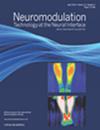骶骨神经调节治疗慢性便秘疗效的随机对照试验meta分析。
IF 3.2
3区 医学
Q2 CLINICAL NEUROLOGY
引用次数: 0
摘要
目的:本系统综述旨在评估骶神经调节(SNM)在成人慢性便秘患者中的疗效。材料和方法:对随机对照试验(rct)进行了系统评价,评估了SNM对慢性便秘的疗效,并按照2020年系统评价和荟萃分析指南的首选报告项目进行了报告。PubMed、Scopus和Web of Science从成立到2024年3月进行了筛选。主要结局是便秘和生活质量(QoL)的改善,次要结局是治疗后的不良事件。偏倚风险和证据确定性通过偏倚风险2工具和建议分级评估、发展和评价方法进行评估。结果:纳入5项随机对照试验,187例患者(93.6%为女性),中位年龄42.5岁;154例患者接受SNM治疗,86例患者接受假刺激,33例患者接受保守治疗,对照组119例患者。在随机效应模型中,SNM后便秘缓解的几率与对照组相似(优势比[OR]: 1.92, 95% CI: 0.68-5.42, p = 0.217)。克利夫兰诊所佛罗里达/韦克斯纳便秘评分降低的中位数百分比在SNM组为27.9%,而对照组为18.4%。两组生活质量无显著差异。两组不良事件发生率相似(OR: 2.22, 95% CI: 0.19-25.53, p = 0.521)。结论:虽然SNM是一种相对安全的治疗方法,但在便秘或生活质量方面没有任何明显的改善。本文章由计算机程序翻译,如有差异,请以英文原文为准。
Meta-analysis of Randomized Controlled Trials on the Efficacy of Sacral Neuromodulation in Chronic Constipation
Objectives
The present systematic review aimed to assess the outcome of sacral neuromodulation (SNM) in adult patients with chronic constipation.
Materials and Methods
A systematic review of randomized controlled trials (RCTs) that assessed the efficacy of SNM in chronic constipation was conducted and reported following the Preferred Reporting Items for Systematic Reviews and Meta-Analyses 2020 guideline. PubMed, Scopus, and Web of Science were screened from their inception through March 2024. The primary outcome was improvement in constipation and quality of life (QoL), and the secondary outcome was adverse events after treatment. The risk of bias and certainty of evidence were assessed by the risk of bias 2 tool and Grading of Recommendations Assessment, Development, and Evaluation approach.
Results
Five RCTs incorporating 187 patients (93.6% female) with a median age of 42.5 years were included; 154 patients underwent SNM whereas 86 patients were crossed over to sham stimulation, and 33 received conservative treatment, amounting to a control group of 119 patients. The odds of relief of constipation after SNM were similar to those in the control group in the random-effect model (odds ratio [OR]: 1.92, 95% CI: 0.68–5.42, p = 0.217). The median percentage of reduction in the Cleveland Clinic Florida/Wexner Constipation Score was 27.9% in the SNM group vs 18.4% in the control group. No significant differences were observed in QoL. Both groups had similar odds of adverse events (OR: 2.22, 95% CI: 0.19–25.53, p = 0.521).
Conclusion
Although a relatively safe treatment, SNM was not associated with any tangible improvements in either constipation or QoL.
求助全文
通过发布文献求助,成功后即可免费获取论文全文。
去求助
来源期刊

Neuromodulation
医学-临床神经学
CiteScore
6.40
自引率
3.60%
发文量
978
审稿时长
54 days
期刊介绍:
Neuromodulation: Technology at the Neural Interface is the preeminent journal in the area of neuromodulation, providing our readership with the state of the art clinical, translational, and basic science research in the field. For clinicians, engineers, scientists and members of the biotechnology industry alike, Neuromodulation provides timely and rigorously peer-reviewed articles on the technology, science, and clinical application of devices that interface with the nervous system to treat disease and improve function.
 求助内容:
求助内容: 应助结果提醒方式:
应助结果提醒方式:


